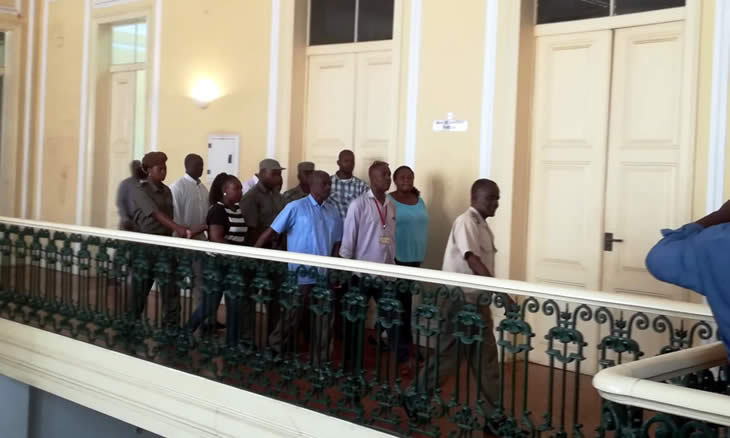Mozambique: Residents protest against landfill construction in Matlemele
Prosecutors lay bare role of Guebuza’s son in fraudulent scheme

In file CoM
What was supposed to be a massive state project to boost the protection of the Mozambican coast and Exclusive Economic Area, in fact only got the go-ahead after the intervention of people who had nothing to do with the State or the government – notably Ndambi Guebuza, the oldest son of the then President, Armando Guebuza.
This is clear from the indictment of 20 people accused in the scandal of Mozambique’s “hidden debts”, and which is now being made available to the press.
The term “hidden debts” refers to the colossal fraud under which two European banks, Credit Suisse and VTB of Russia, lent over two billion dollars to the security related companies Proindicus, Ematum (Mozambique Tuna Company) and MAM (Mozambique Asset Management).
oans on this scale to recently formed companies with no track record, and run by the security and intelligence service (SISE) were only possible because government officials, notably Finance Minister Manuel Chang, signed loan guarantees – pledging that, if the companies did not repay, the Mozambican state would be liable.
Key to the fraud was the Abu Dhabi based company Privinvest, which became the sole contractor for the three Mozambican companies, providing them with boats and other assets at vastly inflated prices.
But initially, back in 2011, it was not clear that the Privinvest scheme would win Mozambican political approval. According to the prosecutors, cited in Wednesday’s issue of the independent newssheet “Mediafax”, one of the Mozambicans working on the project, Teofilo Nhangumele, contacted his old friend Bruno Langa, a SISE officer, to ask what could be done about the “stagnation” and how matters could be unblocked.
Langa said he would talk to his friend and business partner, Ndambi Guebuza. The latter then promised to bring the matter to the attention of his father. But there would be financial conditions attached to this. Ndambi, Langa, and Nhangomele met with a Privinvest representative, Batsetsane Thlokoane, and said they would only do what Privinvest was asking, if they receved adequate “thanks”.
Contacts were then made with senior Privinvest executive, Jean Boustani, who assured Ndambi Guebuza that he would receive “a fascinating gratification”.
In other words, Privinvest was willing to pay bribes. It was on that basis that Ndambi took the project to his father, who did indeed give the green light, but insisted that implementation should be in the hands of SISE.
A few weeks later Nhangumele exchanged emails with Boustani agreed that Privinvest woud reserve 50 million US dollars “to massage the system”.
Visits to branches of Privinvest followed. Ndambi Guebuza, Langa, Nhangumele, and Antonio do Rosario, the SISE officer who would later become chairperson of all three fraudulent companies went to Abu Dhabi, and discussed with Boustani how much money each of them would receive.
The total value of the bribes remained fixed at 50 million dollars – Langa and Nhangumele would each receive 8.5 million, but 33 million would go to Ndambi Guebuza. It was agreed that the three should later divide this money with other Mozambicans complicit in the scheme.
To justify the movement of the money, Ndambi, Langa and Nhangumele signed work contracts with companies of the Privinvest group. To give this a veneer of legality, the three had to open bank accounts in Abu Dhabi, and Privinvest arranged residents’ visas for them.
Once the Abu Dhabi bank accounts had been opened, the bribe money began to flow, just days after Credit Suisse had transferred 327.9 million dollars to Privinvest, under the contract with the first of the fraudulent companies, Proindicus.












Leave a Reply
Be the First to Comment!
You must be logged in to post a comment.
You must be logged in to post a comment.